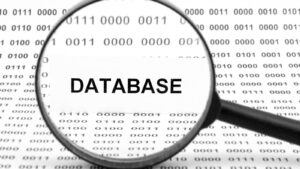
In today’s complex regulatory environment, organizations across various industries face the ongoing challenge of maintaining compliance with a multitude of standards and regulations. This is particularly true for companies operating in highly regulated sectors such as healthcare, pharmaceuticals, aerospace, and manufacturing. One critical aspect that plays a pivotal role in ensuring compliance is effective asset management. By implementing robust asset management practices, companies can not only streamline their operations but also significantly enhance their ability to meet and exceed industry standards.
Understanding the Intersection of Asset Management and Compliance
Asset management encompasses the systematic approach to the governance and realization of value from the things that a group or entity is responsible for over their whole life cycles. In the context of compliance, this involves tracking, maintaining, and optimizing assets in a way that aligns with regulatory requirements and industry standards.
The connection between asset management and compliance is multifaceted:
1. Documentation and Traceability: Effective asset management systems provide a comprehensive record of an asset’s lifecycle, including maintenance history, modifications, and performance data. This documentation is crucial for demonstrating compliance during audits.
2. Preventive Maintenance: By ensuring that assets are properly maintained according to manufacturer specifications and regulatory guidelines, companies can prevent failures that could lead to compliance violations.
3. Calibration and Testing: Many industries require regular calibration and testing of equipment to ensure accuracy and reliability. Asset management systems help track these activities and ensure they are performed on schedule.
4. Risk Management: Through proper asset management, organizations can identify and mitigate risks associated with equipment failure or non-compliance, a key aspect of many regulatory frameworks.
5. Resource Allocation: Efficient asset management allows companies to allocate resources effectively, ensuring that compliance-related activities are prioritized and adequately funded.
Key Components of Compliance-Focused Asset Management
To leverage asset management for improved compliance, organizations should focus on several key components:
1. Comprehensive Asset Inventory
Maintaining an accurate and up-to-date inventory of all assets is fundamental. This inventory should include detailed information about each asset, such as:
– Unique identification numbers
– Location
– Maintenance history
– Compliance requirements
– Associated documentation
A well-maintained asset inventory provides the foundation for all compliance-related activities and helps prevent oversights that could lead to non-compliance.
2. Automated Maintenance Scheduling
Implementing an automated system for scheduling maintenance activities ensures that all assets receive timely care in accordance with regulatory requirements. This can include:
– Routine inspections
– Preventive maintenance tasks
– Calibration and testing procedures
Automated scheduling reduces the risk of human error and helps maintain a consistent, compliant maintenance program.
3. Document Control and Management
Proper documentation is crucial for demonstrating compliance. An effective asset management system should include robust document control features, allowing organizations to:
– Store and organize compliance-related documents
– Track document versions and revisions
– Ensure accessibility to authorized personnel
– Maintain an audit trail of document access and modifications
4. Performance Monitoring and Reporting
Continuous monitoring of asset performance is essential for identifying potential compliance issues before they escalate.

Advanced asset management systems provide real-time monitoring capabilities and generate reports that can:
– Highlight trends in asset performance
– Identify assets at risk of non-compliance
– Provide data for regulatory reporting requirements
5. Integration with Quality Management Systems
For many regulated industries, asset management is closely tied to quality management. Integrating asset management with quality management systems can:
– Ensure consistency in compliance-related processes
– Facilitate root cause analysis of quality issues
– Support continuous improvement initiatives
6. Training and Competency Management
Ensuring that personnel are properly trained in compliance-related procedures is a critical aspect of asset management. This includes:
– Tracking employee certifications and qualifications
– Scheduling and documenting training sessions
– Assessing competency in compliance-related tasks
Leveraging Technology for Compliance-Focused Asset Management
To effectively manage assets for compliance, many organizations are turning to advanced technological solutions. Computerized Maintenance Management Systems (CMMS) have emerged as powerful tools for streamlining asset management and supporting regulatory adherence.
CERDAAC, an industry leader in this field, offers a CMMS specifically designed for regulated companies. Their system emphasizes:
– Streamlined asset tracking
– Automated maintenance processes
– Support for regulatory compliance
– Enhanced productivity and reduced downtime
– Cost efficiency through optimized asset management
By leveraging such advanced systems, organizations can:
1. Centralize Asset Information: Maintain a single source of truth for all asset-related data, ensuring consistency and accuracy in compliance reporting.
2. Automate Compliance Workflows: Set up automated processes for compliance-related tasks, reducing the risk of oversights and ensuring timely completion of required activities.
3. Generate Compliance Reports: Quickly produce detailed reports for internal audits and regulatory inspections, demonstrating adherence to industry standards.

4. Implement Predictive Maintenance: Utilize data analytics to predict potential compliance issues before they occur, allowing for proactive intervention.
5. Enhance Traceability: Maintain a comprehensive audit trail of all asset-related activities, crucial for demonstrating compliance over time.
Safest Practices for Compliance-Focused Asset Management
To maximize the benefits of asset management in compliance efforts, organizations should consider the following best practices:
1. Develop a Compliance-Centric Asset Management Policy: Establish clear guidelines that align asset management practices with regulatory requirements.
2. Conduct Regular Risk Assessments: Periodically evaluate assets for potential compliance risks and implement mitigation strategies.
3. Foster a Culture of Compliance: Encourage all employees to understand the importance of compliance in asset management activities.
4. Stay Informed on Regulatory Changes: Continuously monitor changes in industry standards and regulations, and update asset management practices accordingly.
5. Implement Continuous Improvement Processes: Regularly review and refine asset management practices to enhance compliance efforts over time.
6. Leverage Expert Support: Consider partnering with compliance and asset management experts to ensure best practices are followed and systems are optimized.
In an era of increasing regulatory scrutiny, effective asset management has become a cornerstone of successful compliance management. By implementing robust asset management practices and leveraging advanced technologies like those offered by CERDAAC, organizations can significantly enhance their ability to meet industry standards with ease.
The integration of asset management and compliance efforts not only helps companies avoid costly violations but also drives operational efficiency, reduces downtime, and supports overall business performance. As regulatory landscapes continue to evolve, those organizations that prioritize compliance-focused asset management will be well-positioned to navigate challenges, demonstrate regulatory adherence, and maintain a competitive edge in their respective industries.
By embracing a comprehensive approach to asset management that emphasizes compliance, organizations can transform what was once a daunting task into a streamlined, efficient process that adds value across the entire operation. In doing so, they not only meet current regulatory requirements but also build a foundation for sustained compliance and operational excellence in the face of future challenges and opportunities.













